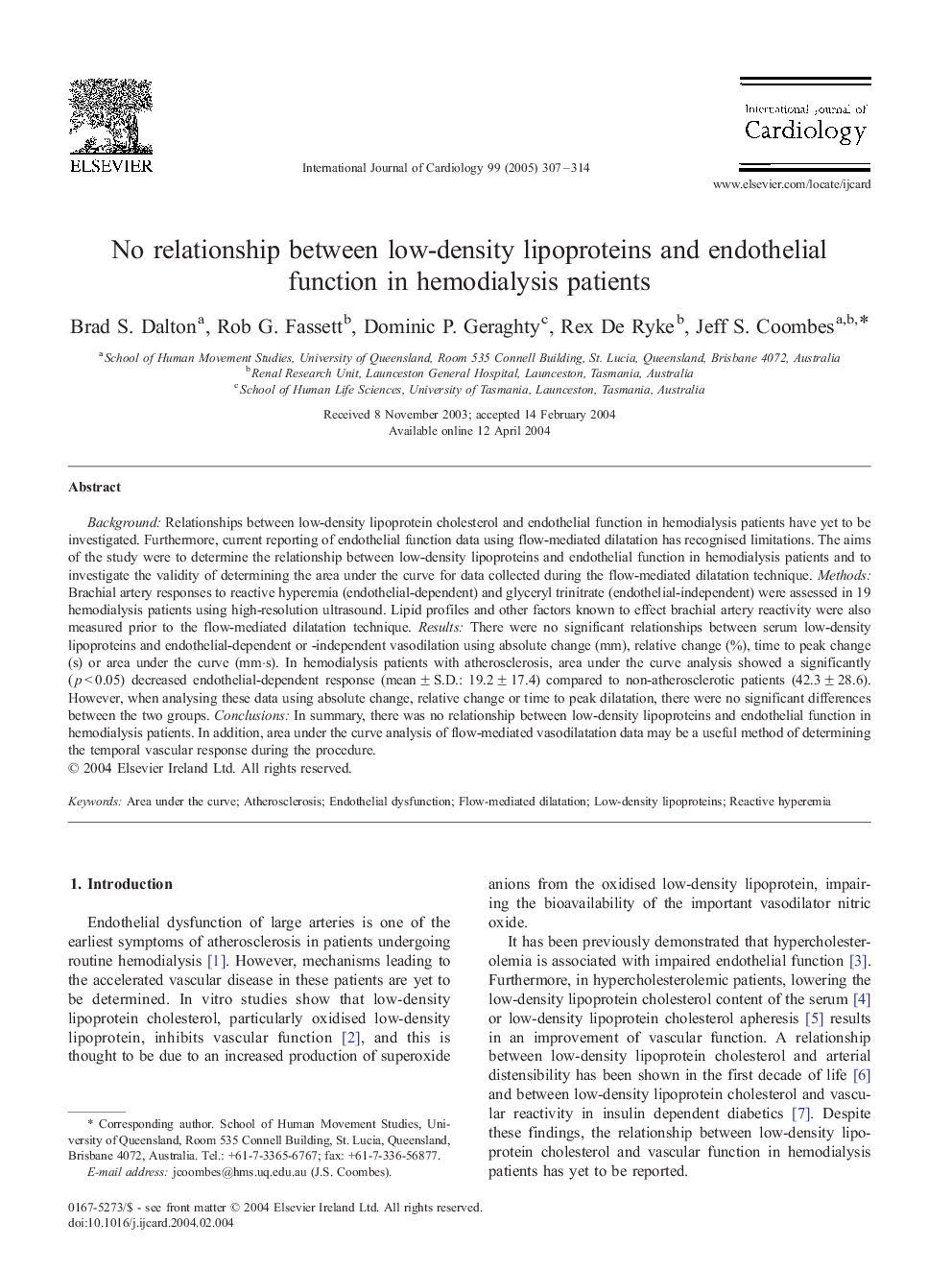| Article ID | Journal | Published Year | Pages | File Type |
|---|---|---|---|---|
| 9957027 | International Journal of Cardiology | 2005 | 8 Pages |
Abstract
Background: Relationships between low-density lipoprotein cholesterol and endothelial function in hemodialysis patients have yet to be investigated. Furthermore, current reporting of endothelial function data using flow-mediated dilatation has recognised limitations. The aims of the study were to determine the relationship between low-density lipoproteins and endothelial function in hemodialysis patients and to investigate the validity of determining the area under the curve for data collected during the flow-mediated dilatation technique. Methods: Brachial artery responses to reactive hyperemia (endothelial-dependent) and glyceryl trinitrate (endothelial-independent) were assessed in 19 hemodialysis patients using high-resolution ultrasound. Lipid profiles and other factors known to effect brachial artery reactivity were also measured prior to the flow-mediated dilatation technique. Results: There were no significant relationships between serum low-density lipoproteins and endothelial-dependent or -independent vasodilation using absolute change (mm), relative change (%), time to peak change (s) or area under the curve (mm·s). In hemodialysis patients with atherosclerosis, area under the curve analysis showed a significantly (p<0.05) decreased endothelial-dependent response (mean±S.D.: 19.2±17.4) compared to non-atherosclerotic patients (42.3±28.6). However, when analysing these data using absolute change, relative change or time to peak dilatation, there were no significant differences between the two groups. Conclusions: In summary, there was no relationship between low-density lipoproteins and endothelial function in hemodialysis patients. In addition, area under the curve analysis of flow-mediated vasodilatation data may be a useful method of determining the temporal vascular response during the procedure.
Keywords
Related Topics
Health Sciences
Medicine and Dentistry
Cardiology and Cardiovascular Medicine
Authors
Brad S. Dalton, Rob G. Fassett, Dominic P. Geraghty, Rex De Ryke, Jeff S. Coombes,
